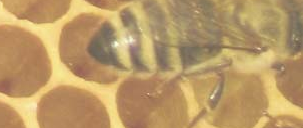
Selling Honey in California
Basic Requirements
Cottage Food Operators in California must specifically meet the following requirements:
- Register with the local Environmental Health Agency
- Only market cottage foods on the approved food list through either indirect and/or direct sales to consumers
- Complete a food processor training course
- Implement sanitary food preparation operations
- Create compliant labels
- Operate within established annual gross sales limit
- Cottage Food Operators will also have to obtain approval from their local planning department, which might have other requirements.
Allowable products
Allowable products under the Cottage Food Law include:
- Honey: plain, pure, and simple in all its varieties, liquid, comb,whipped, flavored
- Baked goods with honey
- Fruit preserves, jams, and jellies with honey
- Nuts, dried fruit, and fruit leathers made with honey
Other requirements
- All Cottage Food Operations must be registered or permitted by the local environmental health agency before starting business.
- Class A Cottage Food Operators may sell honey goods at farmers markets, roadside stands, and Community Supported Agriculture programs directly to customers.
- Class B Cottage Food Operators may also sell to retailers.
- A Class A Cottage Food Operators will get a higher price for each product, but will also incur higher marketing costs than when selling wholesale.
Labeling
All food made by a Cottage Food Operator must be labeled properly with an approved label which states “made in a home kitchen” in 12 point type, along with a descriptive name of the product, the contact information and location of the Cottage Food Operator, the permit/registration number, an ingredient list in descending order of weight, the net quantity in English units and metric units, and a declaration of food allergens. In addition, honey must meet the California Food and Agriculture Code covering quality, packaging and labeling.
Allergens
VHoney allergies are very rare, so this is not considered an issue.
Storage & Packaging
Precautions should be taken to minimize crystallization and
physical and chemical changes during storage. Ideally, store
unprocessed and processed honey below 32°F to preserve aroma,
flavor and color. Crystallization is most rapid at 52-59°F.
Bottle at 104°F or higher (up to 130-140°F) to slow crystallization.
Store unpackaged honey in air-tight containers (eg. sanitized and
sealed stainless steel drums) to protect from external moisture.
Shelf-life is difficult to define, but 2 years is often stated.
Bottling honey requires food grade packaging, including glass jars
or squeezable plastic containers so that consumers can see the
honey’s color. Select both functional and attractive packaging;
elaborate glass jars get higher retail price.
Resources
Great helpful books and guides
The Backyard Beekeeper - Absolute Beginner's Guide to Keeping Bees in Your Yard and Garden, Setting up and caring for your own colonies,practical and nontoxic ways to care for your bees, Swarm control
The Backyard Beekeeper's Honey Handbook: A Guide to Creating, Harvesting, and Cooking with Natural Honeys
Beekeeping For Dummies, very popular
The Backyard Beekeeper’s Honey Handbook by Kim Flottum
- PDF of the Fact Sheet
- California Cottage Fod rules
- National Honey Board
- National and International Beekeeping Associations
- State and Local Beekeeping Associations
- Honey, Beekeeping and Processing Supplies:
- Magazines: Bee Culture and American Bee Journal
Regulations